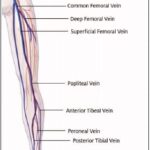Experiencing a misfire in your car’s engine can be frustrating and concerning. If your car is sputtering, running rough, or the check engine light is flashing, you might be dealing with an engine misfire. Diagnosing the cause is the first step to getting your vehicle back to running smoothly. Let’s explore how to approach Engine Diagnosis For Your Car and pinpoint the potential culprits behind a misfire.
Common Causes of Engine Misfires
An engine misfire occurs when one or more cylinders in your engine fail to fire correctly. This can stem from various issues within your car’s intricate systems. Here are some common reasons why your engine might be misfiring:
-
Ignition System Problems: The ignition system is responsible for creating the spark that ignites the air-fuel mixture in your engine’s cylinders. Faulty spark plugs, worn-out ignition coils, or issues with the distributor (in older cars) can all lead to misfires. Ignition coils, in particular, are a frequent cause, especially in older vehicles.
-
Fuel Delivery Issues: For proper combustion, your engine needs the right amount of fuel. Problems in the fuel delivery system, such as clogged fuel injectors, a failing fuel pump, or a blocked fuel filter, can disrupt this balance and cause misfires.
-
Vacuum Leaks: Vacuum leaks can throw off the air-fuel mixture by allowing unmetered air into the engine. This can lean out the mixture and cause misfires, rough idling, and other performance problems. Hoses and seals can degrade over time, leading to these leaks.
-
Compression Problems: Adequate compression within each cylinder is essential for combustion. Issues like worn piston rings, leaking valves, or a blown head gasket can reduce compression, resulting in misfires. These problems often require more in-depth mechanical repairs.
-
Timing Issues: The timing belt or chain ensures that the engine’s valves and pistons work in sync. If the timing is off, even slightly, it can cause misfires and potentially more serious engine damage.
Diagnosing a Misfire: Step-by-Step
When your car starts misfiring, a systematic approach to diagnosis is key. Here’s a step-by-step guide to help you narrow down the potential causes:
-
Check the Basics: Start with simple checks. Ensure you have enough fuel and that it’s not contaminated (although bad gas is less common as a sole cause of misfires). Inspect your air filter to make sure it’s not excessively dirty, although this is less likely to cause a misfire on its own but good for overall engine health.
-
Listen and Observe: Pay attention to when the misfire occurs. Is it constant, or does it happen only at idle, under acceleration, or at high speeds? Note any other symptoms like unusual noises, smells, or smoke. This information can provide valuable clues.
-
Ignition Coil Test: A common culprit, especially in older cars, is a failing ignition coil. If the misfire is continuous, you can try a simple test. With the engine running, carefully disconnect one ignition coil at a time. Listen for a change in the engine’s sound. If disconnecting a coil makes no difference to the misfire, that coil is likely the problem. Remember to take caution when working around a running engine.
-
Spark Plug Inspection: Spark plugs are relatively easy to inspect and replace. Examine the spark plugs for signs of wear, damage, or fouling. A visual inspection can reveal if plugs are worn out, carbon-fouled, oil-fouled, or overheating, which can point towards specific engine problems.
-
OBD-II Scanner: Using an OBD-II scanner is a crucial step in modern engine diagnosis. The scanner can read diagnostic trouble codes (DTCs) stored in your car’s computer. Misfire codes (typically starting with “P030”) will identify which cylinder(s) are misfiring. This helps pinpoint the area to investigate further. More advanced scanners can provide live engine data, which can be incredibly helpful for diagnosing intermittent issues or problems not immediately obvious.
When to Seek Professional Help
While some basic engine diagnosis can be done at home, complex issues or persistent misfires require professional expertise. If you’ve tried basic troubleshooting steps and the misfire persists, or if you are uncomfortable working on your car, it’s time to consult a qualified mechanic.
Professional mechanics have access to advanced diagnostic tools, including more sophisticated scanners, compression testers, fuel pressure gauges, and smoke machines for vacuum leak detection. They also have the experience and knowledge to accurately diagnose and repair complex engine problems efficiently.
Conclusion
Engine diagnosis for your car, especially when dealing with misfires, involves a systematic approach. Starting with basic checks and progressing to more detailed inspections and diagnostic tools is the best way to identify the root cause. While understanding common causes and basic troubleshooting can empower car owners, don’t hesitate to seek professional help when needed. Proper diagnosis and timely repair will ensure your car runs smoothly and reliably for years to come.

